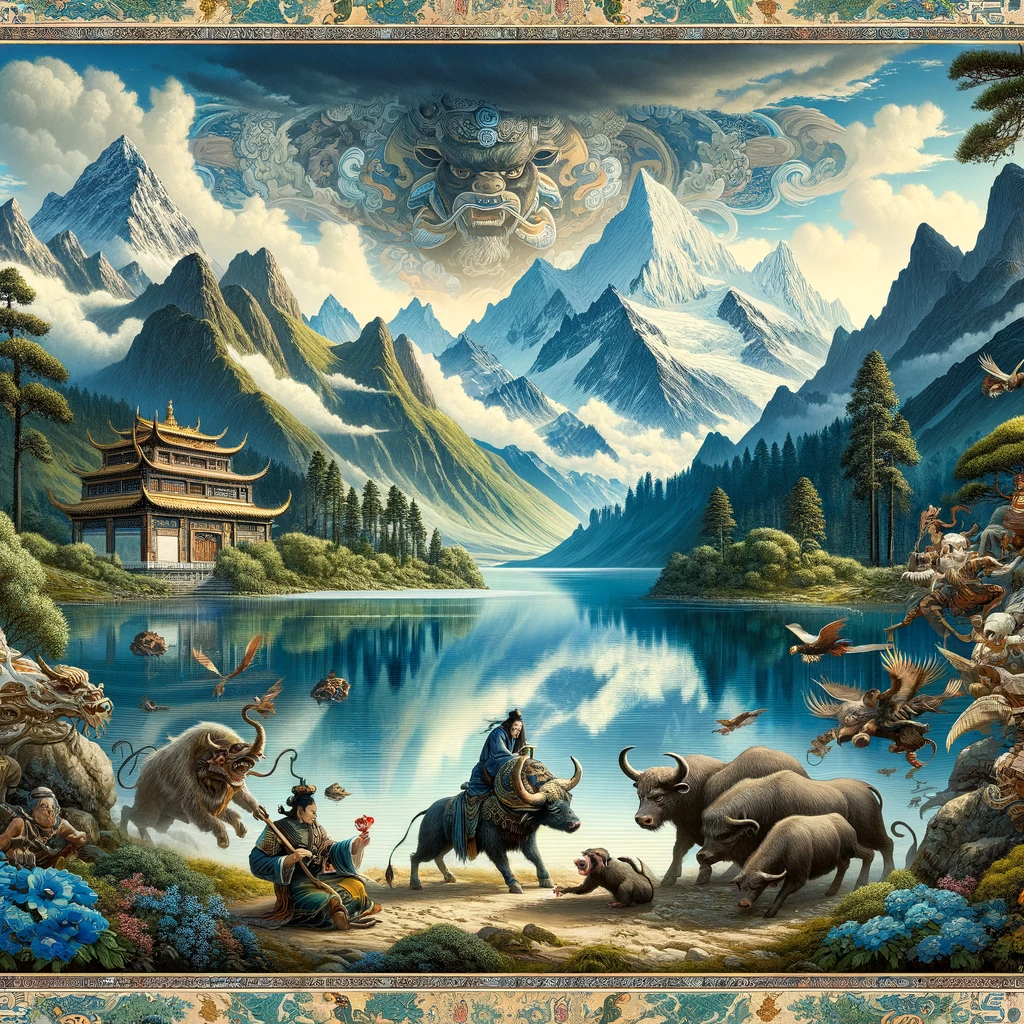The Enchanting Beauty of Ranwu Lake
A Fusion of Alpine Splendor and Idyllic Streams
Ranwu Lake, a breathtaking sight in southeast Tibet, presents a harmony reminiscent of the Swiss Alps’ snowy peaks and the crystal-clear streams found in Jiuzaigou. Professor Zhang Qingsong, a renowned geographer from the Chinese Academy of Science, once described the lake as a natural wonder that combines towering peaks, white glaciers, azure waters, verdant grasslands, and lush forests.
A Journey to Tibet’s Popular Ranwu Lake
The Gateway to Natural Wonders
Situated in the Village of Ran, around 90 km from Baiba Town near Nyingchi Prefecture, Ranwu Lake stands at an elevation of 3,800 meters. With a sprawling water area of 22 square kilometres, it’s the largest lake in the region. Travelers on the Sichuan-Tibet Highway (National Highway No. 318) can glimpse this majestic lake, known as one of the most scenic yet challenging routes in China.
Ranwu Lake is Surrounded by Majestic Landscapes
Peaks, Glaciers, and Peaks
Ranwu Lake is encircled by nature’s masterpieces. To the southwest lies the Gangrigabu Snow Mountain, the Azhagongla Glacier to the south, and the Bosula Peak to the northeast. These natural landmarks provide a stunning backdrop to the lake, contributing to its surreal beauty.
A Source of Life and Beauty
The melting snow from these mountains feeds the lake, also giving rise to important rivers like Yarlong Tsangpo. The surrounding green grasslands, clear blue waters, and white snow-capped mountains create a picturesque setting that resembles a vibrant watercolour painting.
A Changing Canvas of Nature: Ranwu Lake
Seasonal Beauty and Diverse Ecosystem
Ranwu Lake’s water displays varying hues throughout the year, adorned with islets and reefs. The lake transitions into the Amucuo River Valley towards the west, creating a dynamic and ever-changing landscape.
The Lake’s Alpine Neighbors
Many peaks around Rakwa Tso Lake soar above 5,000 meters, adorned with permanent glaciers, while their bases are lush with pine and cypress trees. This striking contrast adds to the lake’s allure, offering a tranquil refuge that is beyond mere words.

A Living Painting of Tranquility
A Harmonious Coexistence
Ranwu Lake is a serene haven, cradled by towering peaks. The pastoral beauty of grazing cattle and sheep, alongside fields of barley, beans, and cabbage, forms a natural tapestry unique to this region.
An Unparalleled Destination
Ranwu Lake is not just a destination; it’s an experience of unparalleled natural beauty and serenity. Its unique blend of alpine and pastoral landscapes offers a glimpse into a world where nature’s wonders are at their most expressive and enchanting. A visit to Ranwu Lake is a journey into the heart of Tibet’s most breathtaking sceneries.
Unravelling the Myths of Ranwu Lake: Tales from Tibetan Lore
A Tale of Conflict and Transformation
Rakwa Tso(རག་ཝ་མཚོ ), in Tibetan, translates to ‘the place where dead bodies pile up,’ a name shrouded in myth. Legend speaks of a fierce battle between a water buffalo residing in the lake and a scalper living on its bank. Their hostility culminated in a deadly fight, leading to their transformation into two mountains near the lake. While this tale doesn’t align with scientific theories about Rakwa Lake’s formation, it resonates with the idea of colossal natural forces at play, akin to the ‘collision of three bulls’ – the Himalayas, Nianqing Tanggula, and Handuan Mountain Range.

The Mischievous Monkeys of Rakwa Tso
A Clever Ruse and Its Aftermath
Another legend tells of a group of mischievous monkeys on a mountain between Rakwa and Kangsha, known for tormenting local farmers. To outwit these troublesome creatures, the farmers devised a cunning plan. They pretended to drink and fight with wooden swords, feigning death. Observing this, the monkeys descended at night, indulging in the abandoned wine and weapons. In their inebriated state, the monkeys turned on each other in a real battle, leading to their near extinction. The sole surviving monkey, overwhelmed by loneliness, tragically ended its life. The farmers, victorious, named the mountain ‘monkey bumping his head mountain,’ adding a humorous twist to the region’s rich tapestry of folklore.
A Landscape Rich in Storytelling: Ranwu Lake
The legends surrounding Ranwu Lake offer a glimpse into the vibrant tapestry of Tibetan culture and storytelling. These tales, blending humour with myth, enrich the already stunning natural beauty of Ranwu Lake, making it a destination not just of scenic splendour but also of captivating narratives from the depths of the Tibetan tradition.

